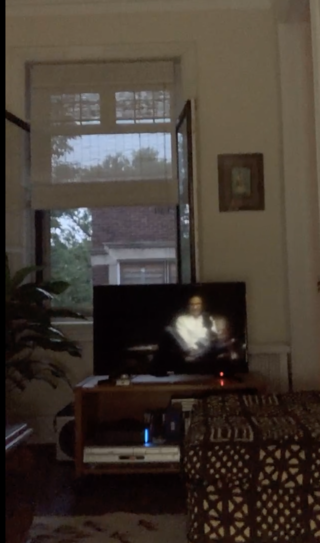Consider a basic principle from the field of Engineering: With increasing pressure, any given material will grow brittle and, eventually, fail. Inconsolably, wood, plastic, steel, ceramic shatter.
What about the mind, is there a breaking point for our psychological well-being? And the heart, that metaphorical core of our emotional being? With pressure, the heart is used up. Disenchantment and heartache can happen slowly, or suddenly, and then desire is sucked out of one’s experience of the world. Let’s explore the types of pressure that the pandemic and quarantine apply to our minds and our hearts.
As I have written in a previous essay, the sudden cessation of being in the world caused by the pandemic felt like alienation insofar as our previous forms of engagement with the world were no longer available. We had to adopt new ways of living and this situation led to feelings of disappointment, rejection, and abandonment.
Disappointment stems from the disruption of expectation, from the sudden transformation of future plans. Existentially, it is an attack on the possibilities of being. Many people subsequently felt doubly disappointed by the impotence of our collective political efforts to save the situation. The pandemic has disappointed our hopes and future plans, putting them on hold or taking them off the table entirely due to instability and the economic ramifications of the virus.
The sense of rejection is a denial of our desires, it is most clearly displayed in individuals who feel barred from taking part in particular economic or social relations. This includes gainful employment as well as intimate relations. For example, essential workers feel their desire to avoid the virus is being rejected. They sense discrimination in how their labor is valued relative to their safety. Class dynamics and thus the relative economic position of individuals has been rendered in stark contrast revealing a rejection of the popular narrative that we live in a classless society.
The sense of abandonment stems from separation distress experienced by infants separated from their caregivers, attachment becomes generalized through development to include many emotional bonds including that of family, home, and citizenship. In fact, it may be accurate to consider what we are going through to be a form of grief. We are experiencing grief for those who died, for those in peril, and for a whole way of life. One of the elements of daily life that is suddenly gone is access to a shared in-person public sphere.

While disappointment, rejection, and abandonment described above relate to the pandemic, there is an additional and separate stress that we are under: the pressure of being suddenly separated from other people under quarantine. Loneliness and the sense of isolation or meaninglessness has weakened us all. When the informal bonds of interaction with strangers and supporting shared collective spaces like transportation and social events were removed overnight, we became a less cohesive society. The psychological ramifications of this de-socializing of the social animal have not been considered enough in our appraisal of how we are responding to the current situation. This may be because America is an individualist society. This sudden separation of individuals from a public sphere causes a form of grief.
While the repercussions of the pandemic and quarantine all lead to pain, social pain has immediate consequences for how we behave. According to Naomi Eisenberger, Since social ties are essential for human survival, the physical pain signal which captures attention and alerts us to damage to the physical body, may have been co-opted by the social attachment system to alert us to potential or actual damage to our relationships. Furthermore, there is a physical-social pain overlap, such that social pain—the unpleasant experience associated with actual or potential damage to one’s sense of social connection or social value—may be processed by some of the same neural circuitry that processes physical pain. Dr. Eisenberger also writes: Another consequence of a physical–social pain overlap is that factors that alter one type of pain have a similar effect on the other…Social support, which reduces social pain, can also reduce physical pain, and pain medication, which reduces physical pain, can also reduce social pain.
Clearly, there are economic and political causes of the massive amounts of unrest rocking nation-states around the world. Social pain caused by social isolation is an important factor and consequence in the ways in which we try to rebuild our world as old forms crumble and long-festering wounds and inequalities burn with renewed intensity.
People who contract the virus feel the full brunt of the somatic effects as well as the psychological stress of stigma, anxiety, and fear. The Guardian reports a study done in San Raffaele hospital in Milan and published in Brain, Behavior, and Immunity: Of 402 patients monitored after being treated for the virus, 55% were found to have at least one psychiatric disorder. The results, based on clinical interviews and self-assessment questionnaires, showed post-traumatic stress disorder (PTSD) in 28% of cases, depression in 31% and anxiety in 42%. Additionally, 40% of patients had insomnia and 20% had obsessive-compulsive (OC) symptoms.
It is foreseeable that just as the effects of the virus endanger our economic and political future, the psychological effects of the quarantine, primarily social pain and isolation, transform our collective organizations and shared endeavors. From local communities to national identities, our separation from each other and relegation to a virtual world of echo chambers and sensationalist journalism further polarizes and thus causes social pain.
How much is too much?
The virus and the fear created in its wake put great strain on the mind. We seek ways to ease the pressure. We try to envision the future in the midst of the stultifying situation.
Is there a limit to our ability to assimilate information? Can we know too much? What is the extent of individual capacity to experience empathy? There are only so many contingencies the human mind can take into account in imagining the future and so regularly it feels like there is ‘too much going on’.
What happens when the strain of information and social pain is too much? Intense periods of stress cause trauma and post-traumatic stress disorder, anxiety disorders, and even psychotic breaks. On the other hand, there is plenty to say about resilience and the human capacity to regenerate and cope through strategies of emotional regulation. We can look no further than citizens of failed states who have lived through civil wars and rebuilt time and again. There is also the resilience of externalizing the struggle into creative acts of expression towards bonds of empathy and collective renewal. Resilience of course requires resources like social bonds built on trust and kindness, but it also depends on the capacity to modulate emotions and their sublimated expression so as to avoid torpor and collapse. Failing to enact these forms of adaptation, individuals are shattered into violent struggle, demoralization, and self-harm.
The most reliable way to regulate the social pain we are experiencing is human touch, and yet that is the precise act that spreads the virus. Pain by any other name still breaks your heart.
References
Asma, S. & Gabriel, R. 2019. The Emotional Mind: The Affective Roots of Culture and Cognition. Cambridge, Ma.: Harvard University Press.
Eisenberger, N. 2015. Social Pain and the Brain: Controversies, Questions, and Where to Go from Here. Annu. Rev. Psychol. 66:601–29.
Eisenberger NI, Lieberman MD. 2004. Why rejection hurts: the neurocognitive overlap between physical and social pain. Trends Cogn. Sci. 8:294–300
Eisenberger NI, Lieberman MD, Williams KD. 2003. Does rejection hurt: an fMRI study of social exclusion. Science 302:290–92 MacDonald G, Leary MR. 2005. Why does social exclusion hurt? The relationship between social and physical pain. Psychol. Rev. 131:202–23
Eisenberger NI. 2012. The pain of social disconnection: examining the shared neural underpinnings of physical and social pain. Nat. Rev. Neurosci. 13(6):421–34
Panksepp, J. 1998. Affective Neuroscience. NY: Oxford University Press.
The Guardian, 08/03/2020. Survivors of Covid-19 show increased rate of psychiatric disorders, study finds. Harroun Siddique and agencies.




